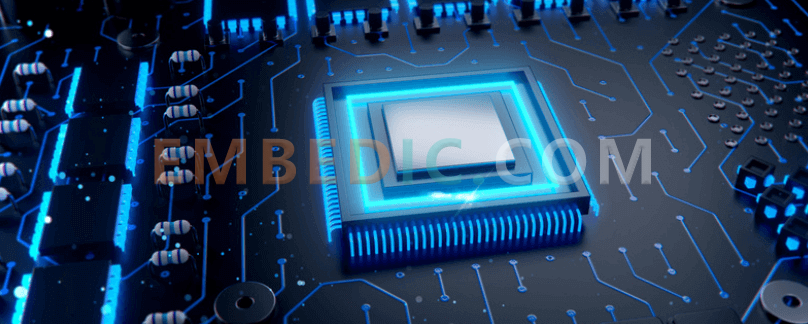The further development of automated factories and smart cars requires advanced networking, real-time processing, edge analytics, and more advanced motor control topologies. The addition of these features has led to a rapidly growing demand for high-performance microcontrollers (MCUs) that go beyond traditional MCUs and provide processor-like functionality. In this article Embedic will present five features of the high-performance Sitara AM2x MCU that will help design engineers overcome current and future system challenges.
MCUs have made many recent advances in memory size, analog function integration, and low power consumption. But in many applications, the ability to quickly process large amounts of real-time control and sensor data is equally important. In automated factories, processing requirements for programmable logic controllers (PLCs) and robotic motor control systems have increased from approximately 100MHz per core to over 400MHz, and may reach over 1GHz in the next three to five years.

In some application scenarios, MCUs will also require higher performance to meet processing requirements, including
Increasing industrial communications, as machines and central data systems need to share large amounts of data over a variety of protocols
Edge analysis for predictive maintenance to keep plants running smoothly.
By increasing the clock speed of each MCU core and integrating multiple MCU cores on the same chip, the Sitara AM2x MCU meets higher performance requirements. with four cores, each running at 800MHz, the AM2434 enables faster and more complex data processing, lower latency control, and high-speed communication on the factory floor than traditional MCUs. For example, faster and smoother control of robotic arms can improve operational safety, productivity, quality and throughput. 2.
As modern factories become more automated, the need for real-time data analysis and control increases. Many legacy systems handle these disparate functions with multiple MCUs. High-performance MCUs, especially those with multi-core architectures, can enable more system integration by performing data processing and real-time control functions on a single device.
The Sitara AM2x MCUs integrate fast data acquisition capabilities and precise real-time control peripherals for high-speed data input and processing. Imagine a single MCU controlling the motors of a robotic arm with integrated audio, current, and position sensing interfaces to improve the safety of robot-human collaboration, all without the assistance of other MCUs. Or an MCU that integrates audio input and sound recognition and classification for improved edge intelligence in building security systems. By enabling multiple processing capabilities on a single chip, high-performance MCUs can make industrial systems not only smarter, but also more affordable and easier to design.
The defining characteristics of MCUs include simple system design and software development. sitara AM2x MCUs expectations for easy-to-use hardware and software do not change, even as MCU performance and integration become more similar to processors.
With Sitara AM2x MCUs, engineers can continue to experience
Simple software development environments and tools (such as those based on real-time operating systems) that support cross-platform reuse, thereby reducing development time and cost.
Efficient real-time task management and a simpler power management architecture that enables more cost-effective power management solutions
Optimized speed and low-latency features thanks to integrated random access memory (RAM)
Real-time sensing and response applications, such as PLCs, must deal with time constraints to ensure safe and continuous operation. This means that systems need to be designed for the time required in worst-case scenarios. Providing easy-to-use software can help you design such systems quickly and efficiently. 4.
Traditional MCUs have on-board non-volatile memory, such as flash memory. However, the increasing demand for data processing in applications ranging from automated factories to autonomous driving poses a challenge for memory scalability. In addition, faster central processing units present two challenges.
System performance is completely dependent on flash speed and performance, especially if the system requires real-time data read and write.
Limited by current processing processes that can support non-volatile memory, such as 16nm.
MCU design engineers can benefit from the flexibility of an external non-volatile memory architecture. With Sitara AM2x MCUs, you can meet growing memory requirements without changing the MCU or redesigning the board, enabling more flexible designs and lower development costs.
Traditional MCUs are known for their low power consumption, but as applications move to high-performance MCUs, reducing power consumption remains critical. Power efficiency is reflected in two areas that are important to designers.
Performance per watt (active power efficiency): Dissipating more than 2W to 3W often leads to cost, weight, and footprint issues for traditional MCU systems, especially those requiring active cooling measures such as heat sinks and fans. Therefore, performance gains cannot be accompanied by a proportional increase in power consumption. High-performance Sitara AM2x MCUs can support performance in excess of 5,000 DMIPS/W.
Low-power (shutdown) modes: MCUs typically operate in lower duty cycle environments, and given the advanced process node design of high-performance MCUs, which have a higher leakage current impact than traditional MCUs, designers need to continue to innovate in power gating techniques and low-power modes such as sleep, deep sleep, shutdown, real-time clock only, and input/output wake-up.
High-performance MCUs make processor-level computing performance more available and will open up new opportunities for designers and customer systems. MCU innovators, product designers and consumers alike will experience the benefits of high-performance MCUs as applications continue to evolve and design engineers realize the full potential of high-performance MCUs in their systems.
Manufacturer: ON Semiconductor
DSP BELASIGNA 200 AUDIO 52-NQFN
Product Categories: DSP
Lifecycle:
RoHS:
Manufacturer: Microchip
IC MCU 8BIT 3.5KB FLASH 18DIP
Product Categories: 8bit MCU
Lifecycle:
RoHS:
Manufacturer: Texas Instruments
IC DSP FIXED-POINT 376BGA
Product Categories: DSP
Lifecycle:
RoHS:
Manufacturer: Microchip
IC MCU 8BIT 7KB FLASH 44QFN
Product Categories: 8bit MCU
Lifecycle:
RoHS:
Looking forward to your comment
Comment